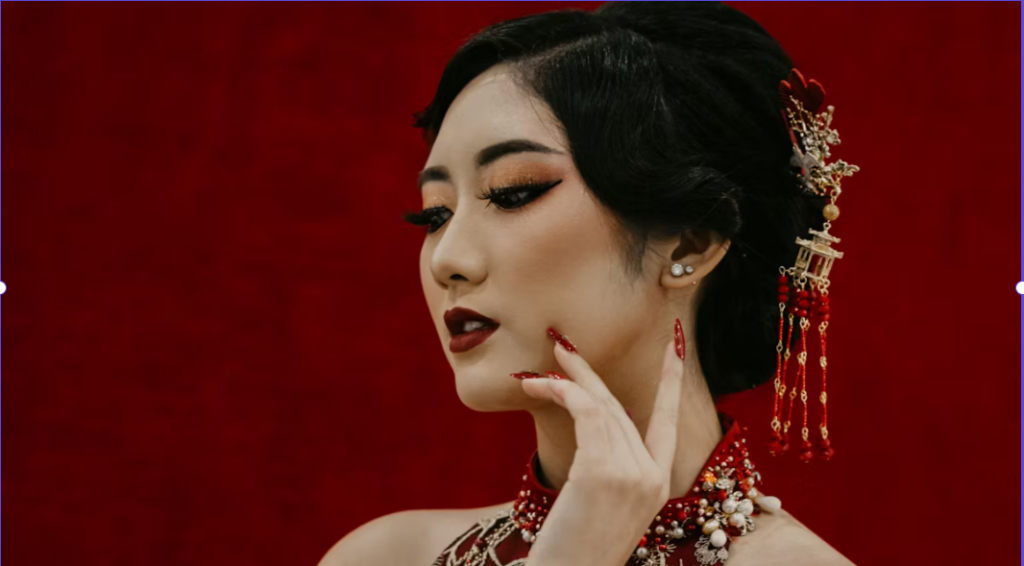The Allure of Cheongsams
Historical Origins
The cheongsam, also known as qipao, has a rich history intertwined with traditional Chinese clothing and fashion history. Originating in the 1920s, it emerged as a fusion of traditional Chinese attire and Western fashion influences. Initially a loose-fitting garment, it has transformed into a form-fitting dress with various style adaptations over the years.

Evolution of Cheongsams
Style Adaptations
The evolution of cheongsams has seen a myriad of style adaptations, reflecting the changing tastes and preferences in fashion. From intricate embroidery to modern geometric patterns, the cheongsam has embraced diverse design elements over time. The incorporation of different fabrics, such as silk, satin, and brocade, has further expanded the versatility of this traditional garment.
Influence on Contemporary Fashion
In contemporary society, cheongsams have made a significant impact on global fashion trends. Designers have reimagined the classic silhouette, infusing it with modern aesthetics while preserving its cultural essence. This fusion of tradition and innovation has contributed to the enduring appeal of cheongsams in the fashion world.
Symbolism in Modern Context
Beyond its aesthetic evolution, the cheongsam continues to symbolize cultural heritage and timeless elegance. Its presence in international events and red carpets signifies its enduring allure and relevance in today’s diverse fashion landscape.
Cultural Representation
The cheongsam serves as a powerful representation of Chinese culture and tradition on a global scale. Its ability to transcend cultural boundaries while maintaining its authenticity underscores its significance as more than just a garment; it is an embodiment of cultural pride and identity.
Symbolism and Significance
Cultural Symbolism
The cheongsam embodies profound cultural symbolism, representing traditional Chinese values and customs. Adorned with intricate patterns and designs, it serves as a visual expression of modesty, grace, and cultural identity. The dress is steeped in symbolism, often worn during significant ceremonies and events as a mark of respect for tradition. Its elegant silhouette and rich colors further emphasize its role as a symbol of cultural heritage, carrying with it the essence of centuries-old traditions.
Modern Interpretation
In contemporary society, the cheongsam has transcended its historical roots to become a modern icon of elegance and cultural pride. It seamlessly blends traditional elements with contemporary fashion sensibilities, making a bold statement that resonates across cultures. This fusion of tradition and innovation has elevated the cheongsam beyond being just a garment; it has evolved into a powerful representation of bridging traditional and contemporary styles while preserving its inherent cultural significance.
Modern Fashion Influence
Global Popularity
The allure of cheongsams has transcended geographical borders, capturing the fascination of fashion enthusiasts worldwide. This traditional Chinese garment has graced international fashion shows and garnered attention on prestigious runways, captivating the global audience with its timeless elegance and cultural significance. Embraced by celebrities and fashion icons, the cheongsam has left an indelible mark on the global fashion landscape, influencing trends and inspiring contemporary interpretations.
Contemporary Adaptations
Contemporary designers have embraced the essence of cheongsams, infusing them with modern elements while honoring their rich fashion history. The versatility of this garment has been amplified through innovative adaptations, making it suitable for a myriad of occasions and style preferences. From subtle embellishments to bold reinterpretations, the cheongsam continues to evolve, seamlessly blending traditional craftsmanship with contemporary flair.
Art of Wearing
Cultural Etiquette
When it comes to wearing cheongsams, there is a deep-rooted cultural etiquette associated with the attire. The art of donning a cheongsam involves more than just putting on a dress; it encompasses specific guidelines for proper attire and accessories. Understanding the significance of colors, patterns, and fabric choices is essential in honoring the tradition and cultural heritage that the cheongsam represents.
To adhere to cultural etiquette, individuals often consider the symbolism behind different colors and patterns when selecting a cheongsam. For example, red symbolizes good fortune and joy, while black may denote solemn occasions. Additionally, paying attention to intricate details such as embroidery and fabric texture is crucial in respecting the historical and artistic value of traditional clothing.
Personal Expression
The art of wearing a cheongsam extends beyond adhering to cultural norms; it also serves as a platform for personal expression and individual style. Each wearer has the opportunity to reflect their personality and cultural identity through their choice of cheongsam. Whether it’s through subtle variations in design or unique accessories, individuals can infuse their personal flair while honoring the timeless elegance of this traditional garment.
Embracing one’s individuality while respecting cultural traditions allows for a harmonious blend of personal expression within the rich tapestry of traditional clothing history.
Embracing Tradition
Timeless Appeal
The enduring charm of qipao and cheongsams can be attributed to their timeless appeal, which transcends generations and cultural boundaries. Their rich history intertwined with Chinese fashion heritage has solidified their position as iconic representations of elegance and tradition. From the intricate details of the fabric to the graceful silhouette, these garments continue to captivate fashion enthusiasts worldwide, serving as a testament to the everlasting allure of traditional Chinese attire.
Cultural Legacy
The significance of cheongsams extends beyond mere sartorial elegance; it embodies a profound cultural legacy that resonates through its every stitch and pattern. As a symbol of grace and sophistication deeply rooted in Chinese fashion, the cheongsam stands as a testament to the enduring pride and heritage of Chinese culture. Its ability to evoke a sense of nostalgia while remaining relevant in contemporary fashion underscores its lasting impact on global style trends.






